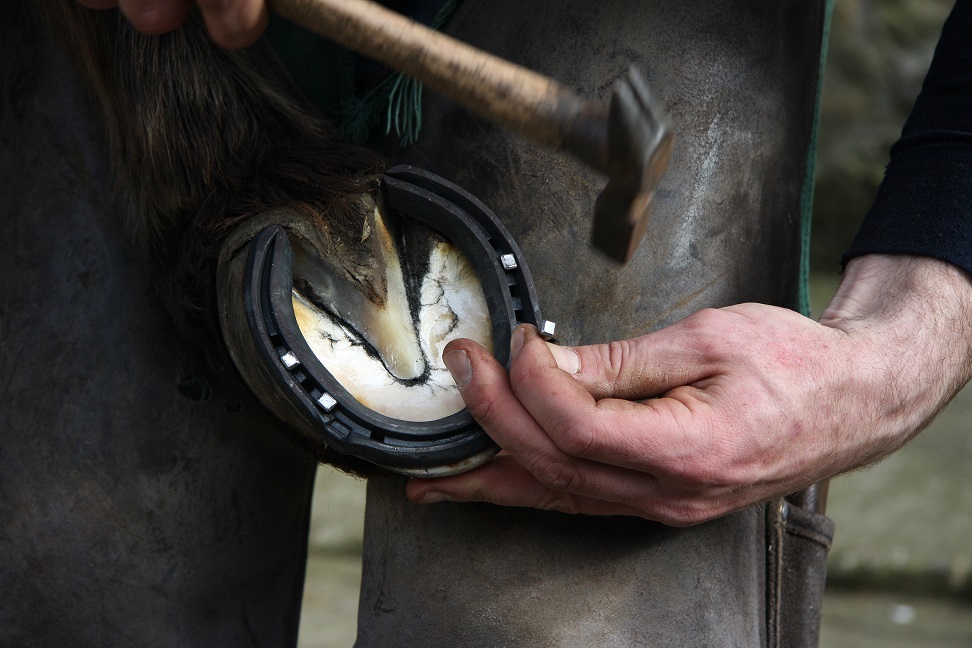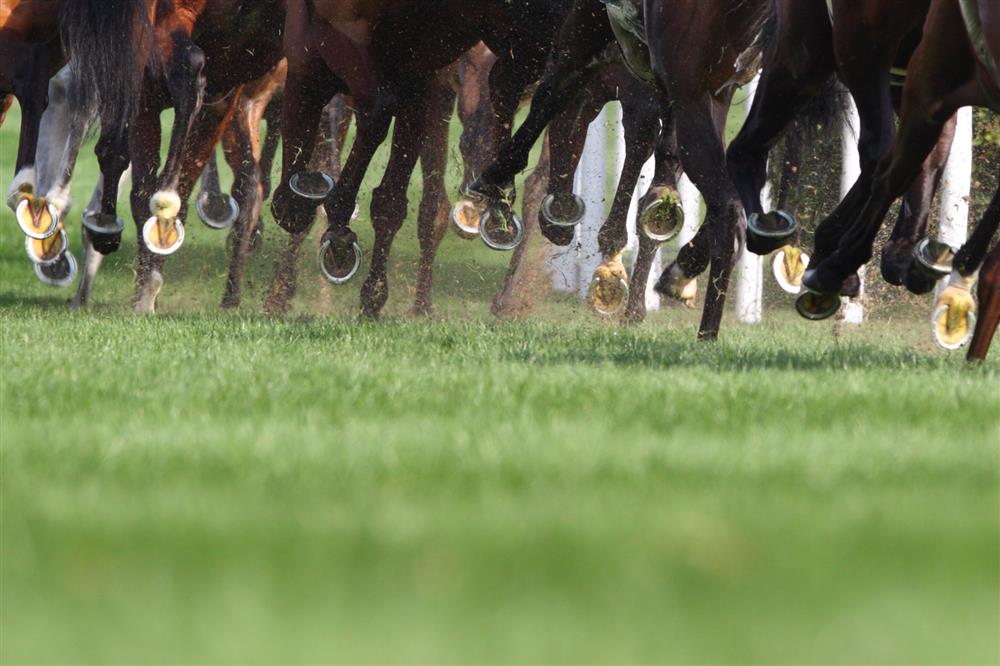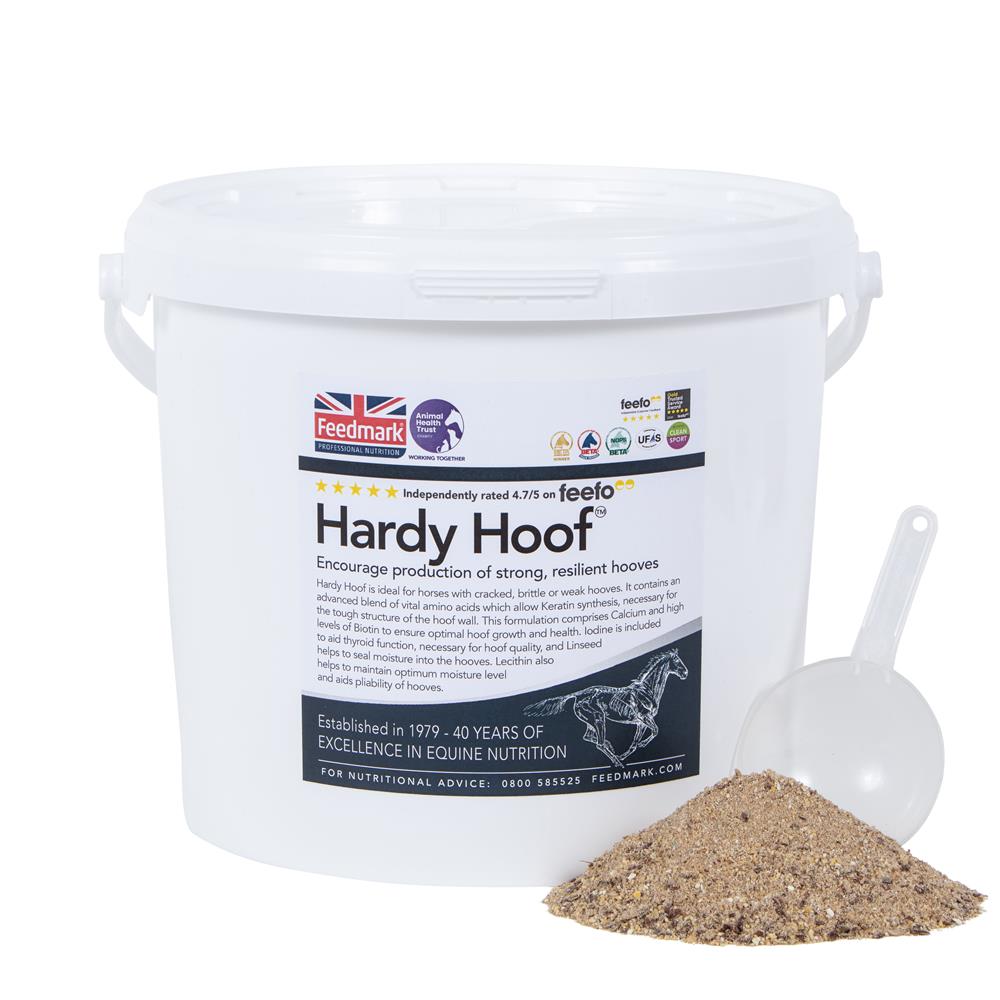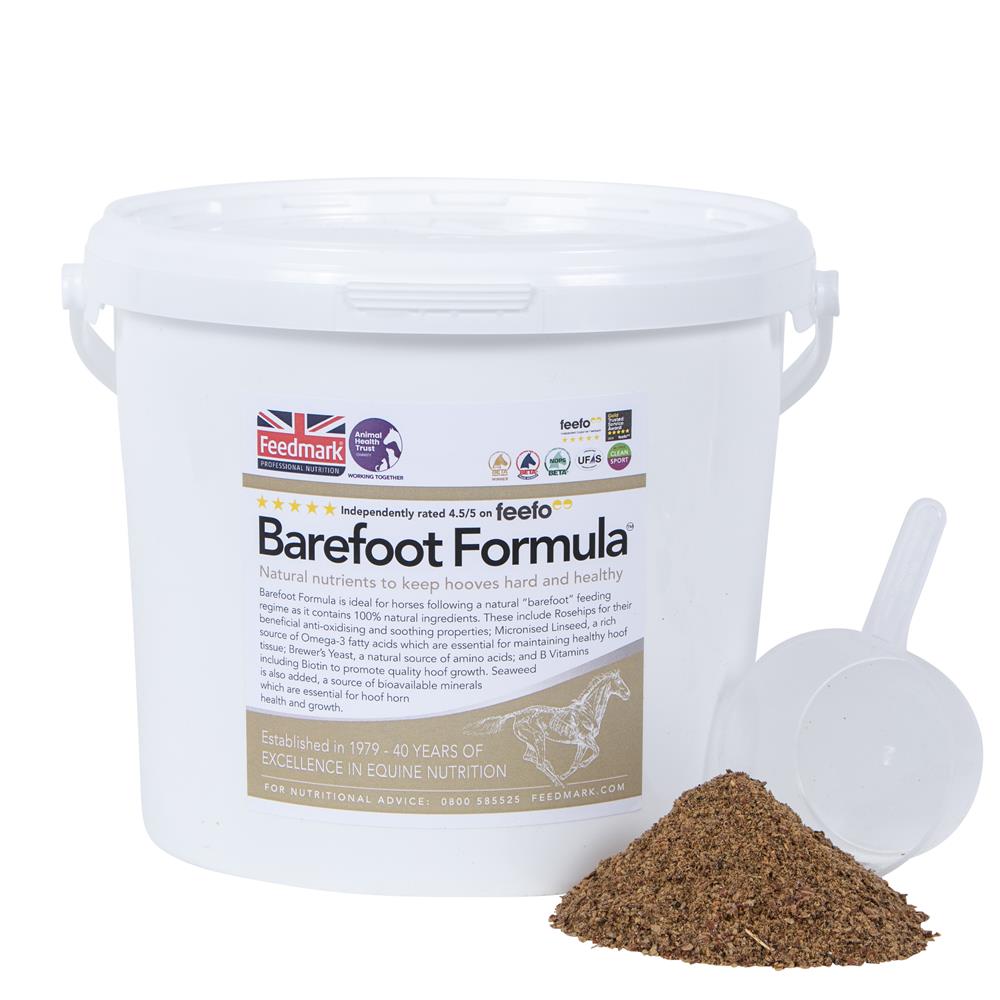Humans have been putting metal shoes on horses for centuries as a way of providing comfort and protection to work horses who would often have to travel for many miles over different terrain. As the demand for the work horse died out and the leisure horse took over, many owners opted to go barefoot.
With each horse having their own individual needs, “To shoe or not to shoe?” can be a tough question to answer! This blog will discuss both management methods to help you make the best decision for your horse.

Why are some horses shod?
The hoof may look like a solid structure, but under the hard hoof wall there are many delicate structures just below the surface. History suggests that shoes were first introduced to provide protection to the horse’s feet, something which is still relevant today! Horses which are in medium to hard work and often work on hard ground and roads may require shoes to reduce wear on the hoof wall. Some horses also find walking on hard and stony ground to be painful, even resulting in lameness and bruised soles. Shoes can offer protection and reduce lameness caused by bruising, especially in certain breeds such as the Thoroughbred.
Some horses are born with poor confirmation which can predispose them to tendon and ligament injuries. Knowledgeable farriers can supply specific shoes which alter the horse’s gait, meaning that they are applying less pressure to certain structures within the limbs. Certain diseases such as Navicular Syndrome may also require specialist shoeing to provide comfort for the horse.
Common shoe types include:
Concave Horseshoe - This shoe is the standard shoe you would find on the standard shod horse.
Eggbar Horseshoe - The Eggbar shoe is an oval shaped shoe which provides the horse with heel support.
Heartbar Horseshoe - This shoe bears resemblance to a heart shape across the heel and frog of the hoof to provide extra support for these structures.
Glue-on Plastic Shoes - These shoes are fitted to those with sensitive feet who may not be able to cope with the concussive action of a hammer or nails being applied to their feet. They are commonly fitted to those with laminitis.
Shoes can cause the horse to lose grip on slippery ground so they can be fitted with road nails and studs for extra grip.

Why are some horses barefoot?
The frog can be found at the base of the foot, this slightly spongy structure can be considered part of the circulatory system, the force applied with each step of the horse causes the hoof to expand and contract, acting as a shock absorber, pushing the blood back up towards the main body of the horse. Certain research suggests that shoes limit the movement of the hoof, thus reducing blood flow to the lower limbs. The increased blood flow can help with injury healing; horses with long-term limb injuries are often turned away with no shoes to allow them to recover quicker.
Going barefoot is certainly a more natural alternative for the horse, it can also work as beneficial for the owner as well because a new set of shoes can cost considerably more than a trim, although it is worth noting that the horse will require trimming more often when barefoot.

When trimming, your farrier should shape the hoof to improve their gait and help to reduce injury. Improving hoof balance can help to encourage equal wear on the hoof and correct hoof growth. Hooves which struggle over rough terrain when barefoot may benefit from hoof boots. Hoof boots are usually made of plastic and act as temporary shoes to reduce bruising and improve comfort to barefoot horses.
How important is nutrition to hoof health?
Nutrition plays a vital role in supporting hoof growth and ensuring that the feet stay strong and healthy. Biotin is a key ingredient in hoof care. Biotin can be found in with most B-Vitamin mixes or even as part of Brewer's Yeast. Feeding a broad-spectrum vitamin and mineral supplement is also important when supporting hoof health. Omega 3 can also promote healthy hoof development; Micronized Linseed is a perfect source of Omega 3. If you are looking to support hoof growth and support, Feedmark offer two supplements, Hardy Hoof and Barefoot Formula.
What is the difference?
Hardy Hoof provides the horse with exact levels of important nutrients which have been calculated by Feedmark’s Nutritionists to provide the best care for your horse, whether they are barefoot or shod. Brewer's yeast and Linseed provide those B Vitamins and Omega 3.
Barefoot Formula contains a blend of all-natural ingredients. Seaweed provides the horse with a natural source of vitamins and minerals, while Rosehips are an excellent source of Vitamin C. Magnesium Oxide has also been shown to be beneficial to hooves. Brewer’s Yeast and Micronized Linseed are also included. Barefoot Formula has been specially designed to follow the barefoot principles.
Generally, our Nutritional Advisors would suggest feeding Hardy Hoof to ensure that your horse is receiving all the necessary vitamins and minerals required for optimum hoof health.













